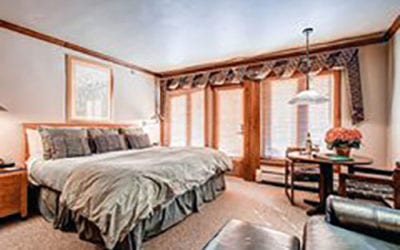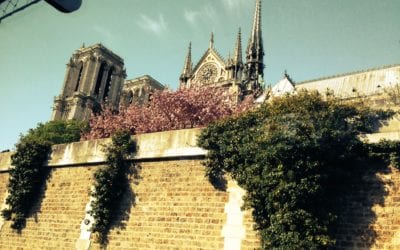Following the U.S. national holiday commemorating the birth of Dr. Martin Luther King Jr., participants in the King Day of Service might consider a follow-up MLK and civil rights journey in Georgia and Alabama.
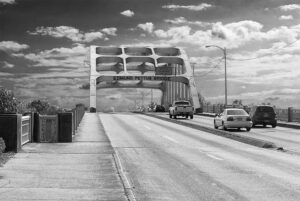
Edmund Pettus Bridge, U.S. Route 80, Selma, Alabama, on March 7, 1965, the site of Bloody Sunday. Copyright © 2023 NSL Photography. All Rights Reserved.
Today in the U.S., we commemorate the life of the Reverend Dr. Martin Luther King Jr. Speaking of Dr. King’s legacy, Coretta Scott King, his widow, at the signing of the bill into law that made the birthday of Dr. King a national holiday, reminded everyone that Dr. King was the “preeminent nonviolent commander.” She spoke of what he stood for and how he worked, saying,
“His nonviolent campaigns brought about redemption, reconciliation, and justice. He taught us that only peaceful means can bring about peaceful ends, that our goal was to create the love community.”
The MLK holiday is unique.
Of all the holidays in the U.S., the holiday honoring Dr. King is unique. It has become a national day of service. Across the nation, following the lead of Philadelphia, Pennsylvania, where the first “Martin Luther King Day of Service” was organized, millions of volunteers are now “turning their community concerns into volunteer service and ongoing citizen action on King Day and beyond.”
After taking part in the “Day of Service,” I believe that for many who don’t know much about Dr. King’s life, they might consider travel in the coming months to explore historic sites that can help bring Dr. King’s past alive and learn how his short but significant life touched millions of Americans’ lives. It’s an exploration that can add perspective of past events and help us gain a better understanding of pivotal American history and its importance in the present day.
For Americans who lived during Dr. King’s short life, this journey can revive important memories. I’ll never forget August 28, 1963. Summer was ending and the start of the school year was just days away. I was there among many in front of the Lincoln Memorial listening to the “I have a dream” speech, one of the greatest of the twentieth century. The impact of that day can never be diminished or overlooked.
The first stop on my MLK journey was King’s birthplace in Atlanta, Georgia.
A few years ago we (my wife and I) began our King journey in Atlanta, his birthplace.
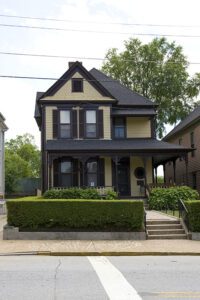
Martin Luther King’s family home. Copyright © 2011 NSL Photography. All Rights Reserved.
We visited the King family home where Dr. King was born. He grew up there with his older sister, Willie, and his younger brother Alfred, until 1941. The home, a modest middle class wood frame structure.
It stands much as it did when King lived there with his family. The home may be visited only via a National Park Service ranger tour. Visiting the home, you begin to get a feel for King’s growth toward adulthood.
(For visitors, unfortunately, the home is temporarily closed until November, 2025. The National Park Service is upgrading and rehabilitating its major systems to ensure the long life of this historic home.)
The home is part of the Martin Luther King Jr. National Historic Site. The Site includes a number of buildings: the Visitor Center, Historic Ebenezer Baptist Church, the King Center, the World Peace Rose Garden, King’s Tomb, along with the King childhood home. The National Park service has also acquired the Vine City neighborhood home that Dr. King and his wife used in the three years prior to his assassination. It’s not yet open to the public.

From the King birthplace, it’s a short walk to the historic Ebenezer Baptist Church where King and his father before him were both pastors.
Martin Luther King Sr. became the leader of the Ebenezer Baptist Church in 1931, with the U.S. in the midst of the Great Depression, when King Jr. was just two. Despite the Depression, King Sr. organized membership and fundraising drives which enabled the struggling church to begin to thrive. King Sr. fought for equal justice and civil rights his entire pastoral life. In 1960, Dr. King joined his father as co-pastor of Ebenezer.
After enduring the murder of his son Martin in 1968, and the accidental drowning of son Alfred a year later, King Sr. suffered the murder of his wife Alberta in 1974, while she sat at the organ in Ebenezer. King Sr. retired the next year.
Selma, Alabama, and the bridge.
From Atlanta, we journeyed to Selma, Alabama, site of “Bloody Sunday” in March, 1965 and the starting point for the Selma to Montgomery protest marches.
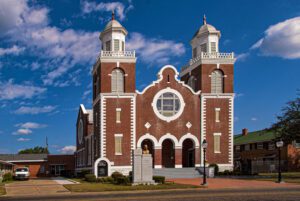
The Brown Chapel A.M.E. Church, Selma, Alabama Copyright © 2011 NSL Photography. All Rights Reserved.
In Selma, we went to the Brown Chapel A.M.E. Church. The church was the gathering point for the marches. On March 7, 1965, about 600 civil rights marchers started their march from the church, led by the Reverend Hosea Williams and John Lewis. As they crossed the Edmund Pettus Bridge, they encountered a wall of state troopers and a county posse who brutally attacked the marchers with tear gas and night sticks. It was called “Bloody Sunday” and televised images of the attack were broadcast around the world. Images of Amelia Boynton, beaten until she was unconscious, fourteen-year-old Lynda Lowery, bloodied, needing more than 30 stitches, and John Lewis with a fractured skull were seen across the globe.
In Selma, Alabama, we walked across the Edmund Pettus Bridge, the site of “Bloody Sunday.”
We then walked across the Edmund Pettus Bridge ourselves, which, while empty but for a few cars, was a powerful image recalling its history of brutality and inhumanity.
From Selma we headed to Montgomery, Alabama. There we visited the Dexter Avenue King Memorial Baptist Church, just a few blocks from the Alabama State Capitol building. King became pastor of the Dexter Avenue Church in 1954, at the age of 25.

In Montgomery, Alabama, after visiting the Dexter Avenue King Memorial Baptist Church, we walked to the Civil Rights Memorial.
King continued to preach non-violent action for civil rights and justice from the Dexter Avenue Church pulpit when in 1957 he and others, including Ralph Abernathy, founded the Southern Christian Leadership Conference. He went on to fight for civil rights in Birmingham, Selma, St. Augustine and across the U.S. until his murder.
Behind the Dexter Avenue Church, you will find the Southern Poverty Law Center and the Civil Rights Memorial Center. The Center has exhibits about the Civil Rights Movement, a small theater and classroom.
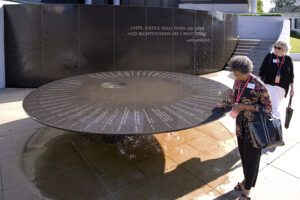
Southern Poverty Law Center Civil Rights Memorial Copyright © 2011 NSL Photography. All Rights Reserved.
In front of the Center, is the Civil Rights Memorial, designed by Maya Lin, who designed the Vietnam Veterans Memorial. The Memorial honors the achievements and memory of those who died during the Civil Rights Movement from the time of the 1954 Supreme Court decision of Brown vs. Board of Education, to the assassination of Dr. King in 1968.
The black granite table at the center of the Memorial records the names of those who died during the movement, and chronicles its history. Water emerges from its center, flowing across its top, and over its side, reminding all of Dr. King’s paraphrase of Amos 5:24,
“…we will not be satisfied, until justice rolls down like waters and righteousness like a mighty stream.”
This is a journey worth taking!
(Images provided by and copyrighted by NSL Photography. All Rights Reserved.)
READ ALSO:
Mobility-Friendly Travel Guide from National Council on Aging
How to file in small claims court for airline disputes
After many years working in corporate America as a chemical engineer, executive and eventually CFO of a multinational manufacturer, Ned founded a tech consulting company and later restarted NSL Photography, his photography business. Before entering the corporate world, Ned worked as a Public Health Engineer for the Philadelphia Department of Public Health. As a well known corporate, travel and wildlife photographer, Ned travels the world writing about travel and photography, as well as running photography workshops, seminars and photowalks. Visit Ned’s Photography Blog and Galleries.

